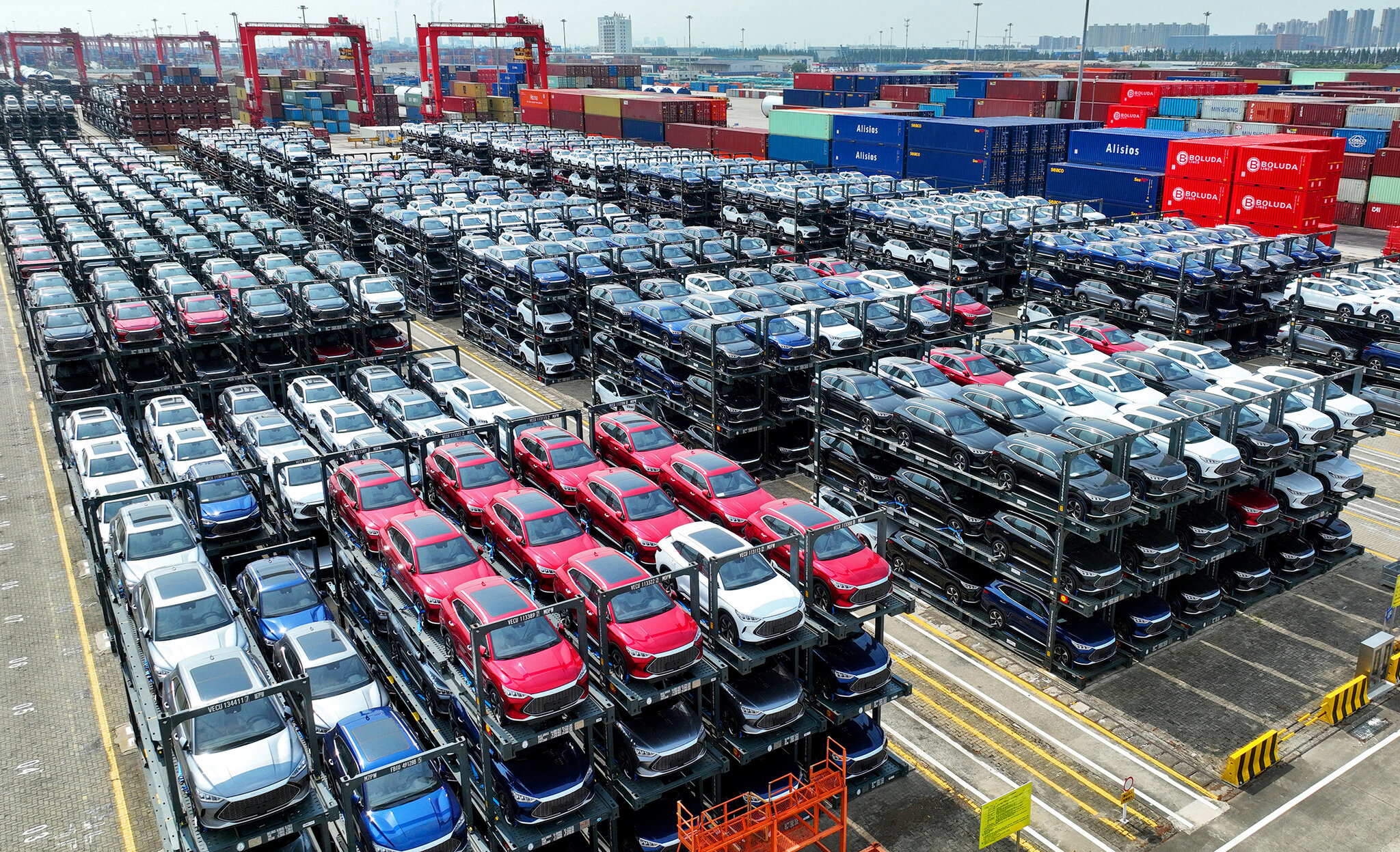
Published 11/05/2024 11:33 | Edited 11/05/2024 11:38
A new wave of protectionist measures is being put into practice against China’s exports around the world, under the argument that excess production capacity is leading Chinese companies to sell their products abroad at deep discounts, harming their local manufacturers.
The two most targeted sectors are the production of electric cars and the steel industry. There is even talk of “China Shock 2.0” in reference to the early 2000s, when there was an alleged invasion of cheap Chinese products around the world after its accession to the WTO. Only this time they are not cheap products, but sophisticated and high-tech products, as is the case with electric cars, in which the Chinese have become masters in terms of performance, design and interior finishing and, obviously, in price.
In the case of the steel sector, the argument is that the crisis in the real estate sector in China, which consumes 25% of the world’s steel production, has left Chinese steel manufacturers with many stocks that are being sold abroad at deep discounts, thus harming competitors. locations. Several countries have opened procedures to verify the existence of dumping and thus be able to surcharge Chinese steel. It turns out that if the procedures for verifying dumping in the case of Chinese steel were the same as those used for other Western companies, it is unlikely that any dumping margin would be found that would justify the surcharges. But this is not the case.
When China was accepted into the World Trade Organization (WTO) in 2001, it had to submit to a series of discriminatory rules because it was mistakenly not considered a market economy. Among these rules, there is one that provides that the verification of dumping margin in countries not considered a market economy uses as a reference not the normal prices practiced in the country investigated, but rather the prices of third markets. It is obvious that the enormous scale of Chinese production and strong internal competition make its products more competitive both in China and abroad. But the use of prices from third markets will always identify a dumping margin, even if in reality it does not exist.
In fact, with the virtual bankruptcy of the WTO promoted by the United States, many countries, especially the United States itself, care little about WTO rules. So much so that President Biden, at a campaign rally in April, has already said he will ask for the surcharge on Chinese steel to be tripled regardless of any verification. Unfortunately, world trade, after Trump, became a no-man’s land where those who can afford it cry the least.
The case of the automobile sector is much more complicated, since the arguments used to demonstrate that there is excess Chinese capacity in the production of electric cars are beyond questionable, starting with the very concept of excess capacity, even more so in the production of a product, the electric car, that has barely reached the world market and whose demand is expected to multiply several times in the coming years.
As the Global Times newspaper (27/4) noted, “According to calculations by the International Energy Agency, to achieve the goal of carbon neutrality, global sales of new energy vehicles need to reach approximately 45 million units by 2030, 4.5 times more than in 2022. This shows that global demand is real and there is no “excess capacity”.
According to the narrative created, again by the United States, to justify the argument of excess production capacity for electric cars in China, the crisis in the Chinese real estate sector, which accounts for around ¼ of its GDP, would have led the government to stimulate investments in the manufacturing industry and exports to guarantee the 5% GDP growth target set by the government. If in fact the Chinese government did this, there is obviously nothing wrong, given that the United States itself is offering hundreds of billions of dollars to national and foreign companies to transfer the production of semiconductors, solar panels, green hydrogen and everything else related to high technology and energy transition.
But returning to the case of electric cars, what actually happens in China is that faced with the prospect of rapid growth in domestic demand, there is intense competition to manufacture electric vehicles in the country. The number of cars China exports, although increasing, is only a small fraction of its domestic market. The world’s largest vehicle exporters are not the Chinese, who have barely reached the market, but American and European companies in the sector.
According to the Japanese newspaper Nikkei Asia (08/5), in Germany, Chinese-made vehicles represented just 0.8% of new cars registered in March, according to KBA, the German Motor Transport Authority.
Unlike Europe and the USA, where the automobile industry is a gigantic oligopoly dominated by half a dozen companies, in China there are currently more than 50 electric car manufacturers in fierce competition with each other. Paradoxically, the West, with its capitalism constrained by the exorbitant power of large corporations, is uncomfortable with the fact that China practices competitive capitalism, the true market economy, as imagined by Adam Smith and his followers.
If there were actually excess capacity there wouldn’t be so many foreign companies in the sector wanting to invest in China. As reported by the Chinese newspaper Global Times (27/4), “German automaker BMW Group announced its plans to invest another 20 billion yuan (US$3.12 billion) in its production base in Shenyang, Liaoning province, in northeast China on Friday.” According to the Financial Times, “in late 2020, Volkswagen opened a research and development center in Anhui province and holds a major stake in Guoxuan, a Chinese battery company.” At the 18th Beijing Auto Show, opened on 4/25, there were more than 1,500 exhibiting companies, 278 models of new electric cars and 117 world premiere models. In a recent article published in Carta Brasil-China (Ed. 37. April 2024), Haixu Qiu states that the Chinese Academy of Sciences predicts that China’s electric vehicle fleet will reach 200 million cars by 2035.
As Zhang Xiang, director of the Digital Automotive International Cooperation Research Center of the World Digital Economy Forum (Global Times, 4/27), recalled, “The US exports 80% of its chips and is a major exporter of planes, automobiles, computers , soybeans and agricultural products to China. Is this ‘excess capacity’ in line with US logic?” In fact, the claim of “excess capacity” in the case of Chinese electric vehicles is not a market-defined conclusion, but a narrative created by Western competitors who fear that Chinese competition will force them to reduce their prices, as indeed is already occurring.
Source: vermelho.org.br

